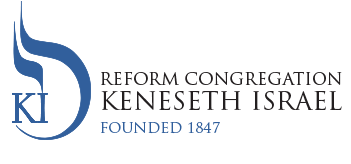“Acheinu” Resounds Throughout Our Community and the Jewish World!
This week’s portion teaches us about G-d’s requirement to bring gifts to the community’s leadership for the community’s maintenance. Moses ascends Mount Sinai for a second time in order to learn what G-d expects of him and the Israelites. G-d gives Moses a list of physical materials needed to construct the portable sanctuary and accessories that will be erected each time the children of Israel stop on their desert march. After the sanctuary is assembled, the Kohanim/priests instruct the people what sacrifices are needed by G-d. After the required sacrifices are brought to the Kohanim/Priests, the Priests disassemble the movable Mishkan/Sanctuary, and prepare it for travel to their next location, where it will be put together again.
The inner chamber of the Mishkan contains the Ark of the Covenant, in which the “Shnei Luchot Habrit,” the Two Tablets of the Covenant, are stored and carried behind an artistically woven Parochet/Ark Curtain. The Menorah, the seven branch candelabra stands in the outer courtyard of the Mishkan/Sanctuary.
We have much to learn from the opening verses. “Terumah,” is translated in the New Jewish Publication Society Torah as “Gifts.” Our synagogues, Jewish schools, Federations, museums, and cultural organizations are totally dependent on our Terumah, our contribution, for their survival. Of course, we define “Gifts” very broadly. Our synagogues’ dues and fundraising obligations are “Terumah.” But so are the gifts of our time, creativity, and energy to the maintenance of our beloved KI and all the Jewish organizations that are so meaningful for us.
Verse 8 teaches: “And let them make me a sanctuary that I may dwell among them.” This Pasuk/sentence has been emphasized by Jews for generations. Every synagogue structure, no matter how humble or grandiose, is a fulfillment of this verse. There are congregations that place this quotation on the wall of their sanctuaries.
The Song, “Acheinu,” Brings Comfort and Optimism
To Israelis, Jews Worldwide and to all of Us
On Shabbat evening, January 26, Cantor Levy and the combined Shir KI and Makheilah Choir from Congregation Or Hadash joined together for the International Shabbat of Holocaust Remembrance. As part of our music, we sang “Acheinu” at KI for the very first time. This powerful and dramatic prayer is now being recited at congregations throughout the Jewish world. The text of this prayer is at least 1200 years old. It is found in Machzor Vitry, an early precursor of our High Holiday prayerbook of the Jewish community in Medieval France.
It is printed today in both Conservative and Orthodox prayer books, and is recited every Monday and Thursday morning following the Torah reading.
The ancient words are so relevant to the Jewish victims of the Israel-Hamas War: “As for our brothers and sisters, the whole house of Israel, who are given over to trouble or captivity, whether they abide on the sea or on the dry land, may the All-present have mercy on them and bring them forth from trouble to blessing, from darkness to light, and from subjugation to redemption, now speedily and at a near time!”
Abie Rotenberg, an Orthodox songwriter in Toronto, wrote the powerful and intense melody to these words in 1986. I heard the song for the first time at the conclusion of the huge Washington Rally in November.
This song is now heard all over the world. Of great importance and significance, the song is sung at congregations of every denomination, Orthodox, Conservative, Reform, Reconstructionist, and unaffiliated! It has scaled ideological boundaries!
Rabbi David and Cantor Levy are planning to make this song and text part of the KI Shabbat evening liturgy. I am sure that our congregants will learn this searing and intense melody and text quickly.
Here are a few examples of Jews’ singing Acheinu in their congregations and at communal gatherings:
- The original recording, sung by Abie Rotenberg in 1986
- Members of the Israel Defense Forces Army Choir and Cantor Shai Abramson, and IDF soldiers
- The Hampton Synagogue on Long Island
After you watch these recordings, you will know the song!
I encourage you to learn this prayer and its melody, and add your voice to the Jewish community praying daily for return of the hostages and for Shalom, for Peace. Shabbat Shalom U’m’vorach!
